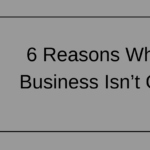One way to control the cash crunch
When a consultant asked two entrepreneurial friends, do we know why an organization feels a cash crunch to operate successfully? Why do you need working capital finance every time? Why is it that every time you are short on paying vendors?
One friend said I think it is because of the business landscape i.e. I got a bigger order which is unpredictable and so needs temporary funds – I think that is the need of the hour and so funds rotate within the business instead of payment to external parties… OHK that is understandable.
But my case is different, the other friend said. I make some wrong decisions emotionally and unknowingly money is getting stuck in the unpredicted baskets due to which I overshoot my budget.
Here the consultant added
Generally, a business requires funding to fill four baskets i.e. Inventory or C/f projects, Receivables, Overheads, and R&D or Marketing to control them you need to keep cappings and overview them.
Then of course the next question was how can we Cap it?
1. Budget funds appropriately within four baskets. Let’s take an example: a company having working capital of Rs. 2:00 Cr. Now CFO/VCFO will work out capping between the following 4 basket
- 1. Inventory or C/f projects – say 50 lakhs
- 2. Receivable – say 50 lakhs
- 3. Overheads – say 60 lakhs for fixed and variable overheads ( factory & office both)
- 4. R&D or Marketing – say 40 lakhs.
- The service Industry has C/F projects as inventories
2. These 4 baskets can further be sub-classified into A, B, C categories like
- Inventory – say 50 lakhs ( 15 lakhs for a fast-moving product, 5 lakhs for a slow-moving product, 5 lakhs for new product innovation, 20 lakhs for product’s raw material, 5 lakhs of cycle inventory )
- Receivable – say 50 lakhs ( 15 lakhs of a fixed regular customer, 5 Lakhs of a regular customer, 10 lakhs of the irregular customer, 10 lakhs of provision for the customer, 10 lakhs of the reserved fund to avoid bad debts. ). AND likewise Your other two baskets
3. Incorporate capping into each sub-category in software and keep it flexible base on business needs
4. Monitor capping under each sub-category minutely with safety indicators: Say 15 lakhs is capping for fast-moving inventory, a safety indicator can be kept @ 12 lacs for you to react on it.
Here both friends said… doing this is easy but following it is difficult where the consultant said that, out of many only some are successful entrepreneurs, he added that at least by doing this you will have a real-time idea of where your money is stuck in your business and plan your action.
Here Consultant gave a very practical example of a company who was blocking funds in inventory with anticipation of future usage becoming deadstock, with this real-time tracking it is running a half-yearly liquidation program and releasing funds for rolling
Since the new year is starting you can do this exercise for a quarter and see the benefit of it.
In case you require any guidance you can connect to your friend who is a call away from you….





